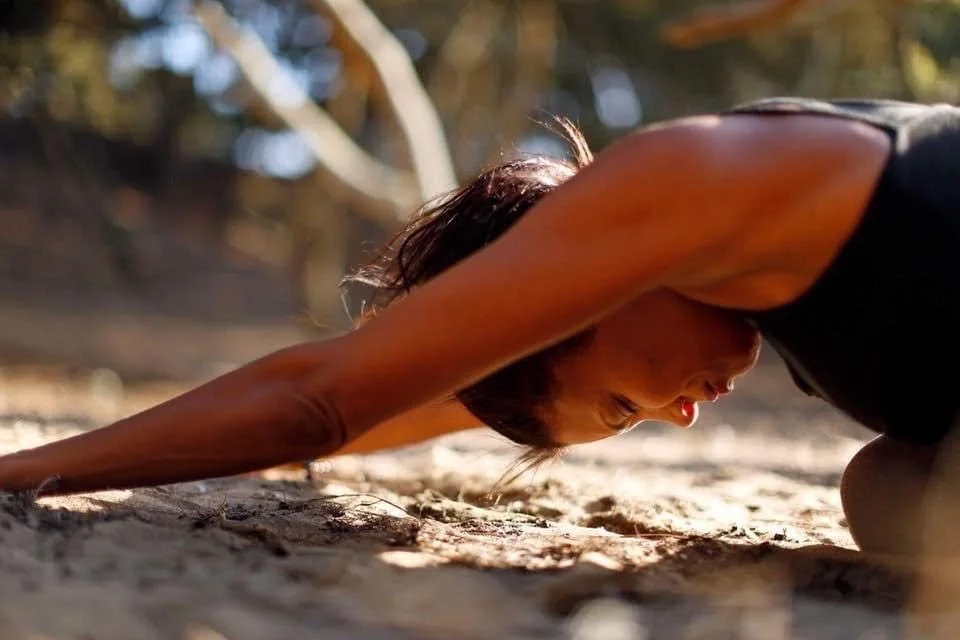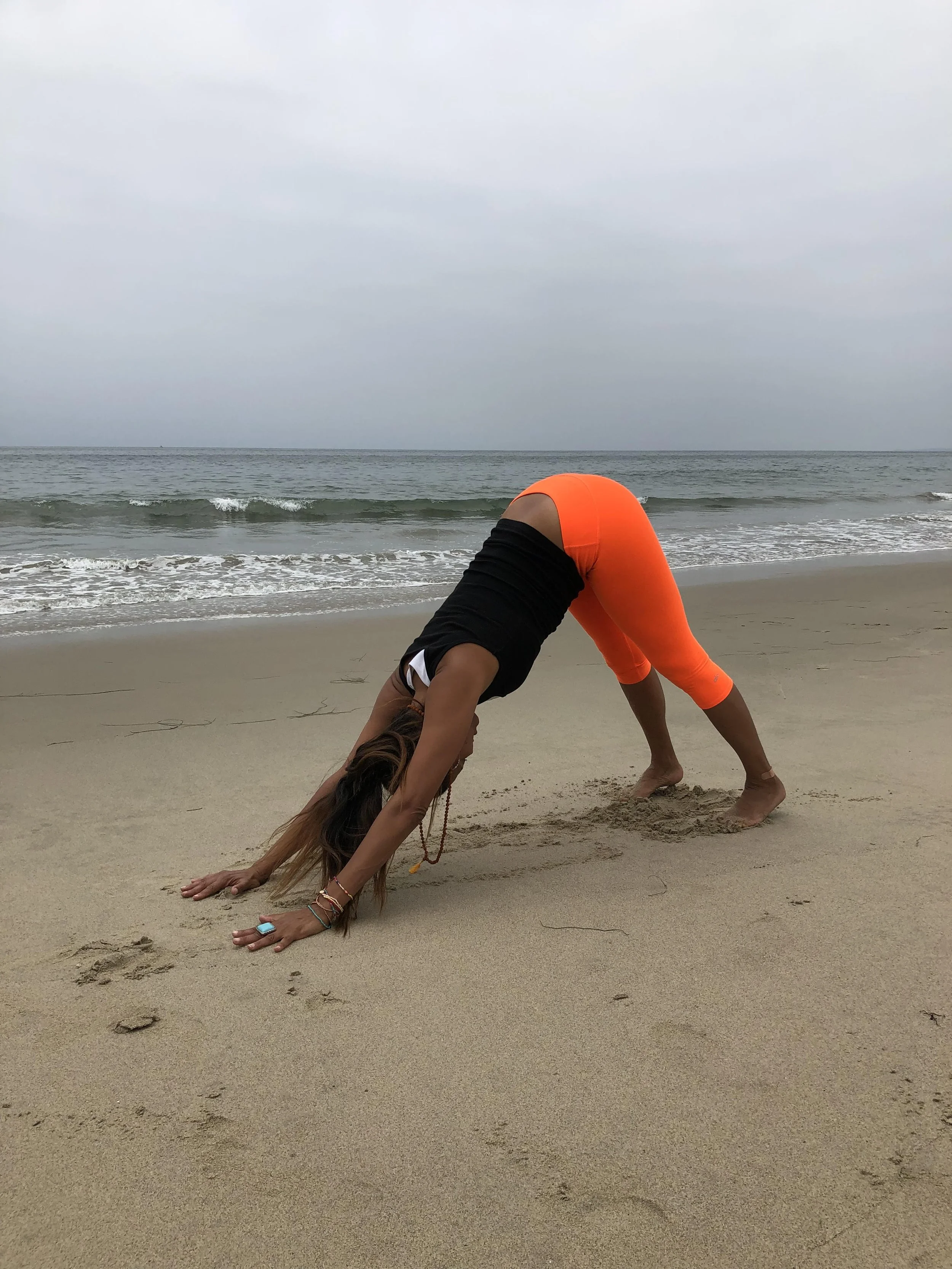RECOVERY YOGA
Lonni H. Rivera | Yoga Instructor
Whether it's processing a long day at work or losing a job, nurturing your muscles and tendons after a workout, or coping with incredible loss; yoga is a wonderful tool for anyone recovering from something in their lives.
A Positive Outlet
Since the pandemic began in 2020, many of us have been searching for a positive outlet to better navigate the ups and downs of life. Many have turned to Recovery Yoga. What's wild is yoga has been around a long time. How long? It dates back to ancient India and began to emerge in the fifth and sixth centuries BCE.
The ancient practice allowed humans to get to know themselves mentally, physically, and spiritually. Here in the Western World, we've adopted the physical practice on the mat. The world of yoga, with all its genres, is so vast and rich. It’s available for anyone courageous enough to seek it and find their yoga.
But What is Recovery Yoga?
Having said all that, What's Recovery Yoga? I am excited to be one of the instructors offering this wonderful hour-long class at Pittsburgh Fitness Project in Lawrenceville. As a devoted practitioner, I found yoga after a long and arduous day in the news business back in 2003.
At that time, I was working as a TV field reporter in Austin, Texas. I found myself having a tough time recovering from the grueling long 12-hour or more work days. Days that involved chasing breaking news covering Texas wildfires, floods, politics, crime... you name it, I was there on the scene, mic in hand, ready to report the news. Once the day wrapped, I would arrive home with "monkey mind." A phrase used a lot in the yoga and meditative world that simply means thinking too much. Just having a tough time letting go of the day. My thoughts would run wild and interrupt my sleep.
So one day, a producer and I decided to take a yoga class at a dance studio near the University of Texas. From that day forward, I was hooked. I soon began a daily yoga and meditation practice to help me relax and be more present in my personal and professional life
Now, fast forward to 2022, I have been teaching now for 6 years now. I am a certified instructor with two certifications from studios in Sacramento, California, and Los Angeles, California. Teaching in and of itself is an amazing meditation. Helping others find their calmness and stillness benefits me too. One hand washes the other. We are all so connected in this big Universe.
Yoga Recovery
Recovery Yoga really gives athletes, weight lifters, or gym rats balance to their workout regimen.
Child’s Pose
Say, for example, a pose as simple as child's pose. Child's Pose is a relaxing and ground pose following a workout.
Here’s how you get into it...
1. From your hands and knees. Bring big toes together, knees about hip distance, and sit hips to heels, resting your head down toward the mat. The benefits are plentiful. It reduces stress and anxiety, relieves back pain, plus it stretches the ankles, backs, and hips.
So maybe your workout focused on the lower body and lots of squats. Child's pose is a great way to release and recover. The pose helps activate the parasympathetic nervous system, which helps you to calm and relax you. It's a great way to give yourself a time out after working out or even before bedtime.
Standing Forward Bend
Standing Forward Bends or Uttanasana is super beneficial in Recovery Yoga. I often encourage practitioners to soften their knees with a micro bend to protect their backs. Boy, can this release so much after a workout. It can really aid in the body's recovery after going hard in the gym.
You start in mountain pose. Feet are about hip-width apart, hinge from your waist, with a soft bend and fold over. Let the crown of the head just fall like a rag doll. So it's not surprising it helps to release tension in the upper back and shoulders. Plus, it can heal headaches and stretch the hamstrings, calves, and lower back. The back body has an opportunity to release and recover after your workout.
Follow Lonni’s Yoga Story on Instagram here!
Downward Facing Dog
In the yoga world, one of the most popular poses is Downward Facing Dog. It really does stretch and strengthens the entire body. It's also considered an inversion because the head is below the heart. This pose can be a great way to get circulation going after a strenuous workout. Getting into this inverted V shape can start from hands and knees. Tuck your toes and lift your hips up high. Hands are shoulder-width, and feet are hip-width. Keeping a soft bend to the knees can help keep the spine from rounding. The idea is to elongate the spine and draw the shoulders away from the ears, This pose can be as active or passive as the yogi desires. It can really help to get the blood flow going. Some yogis like to pedal their feet for a nice calf stretch. If it's not accessible, then coming back down to child's pose is always a great alternative to Downward Dog.
Asana
Asana or poses is what the focus tends to be here in Western Culture. People who work out often turn to yoga to increase mobility and flexibility. Achieving more flexibility cannot happen without deep breathing. Breathing deeply can create heat and move oxygen through the body making movement easier and more accessible.
For beginners, I often like to lead what I can a 4 count retention breath. Inhale for 4, hold for 4 and then an audible exhale for 4 counts.
There are so many breathing counts and techniques. The breath can be effective in helping yogis stay in the present moment. As your mind wonders thinking about whats to come or what happened, the breath can be a wonderful anchor. Not to mention just listening to the sound of breath in a room can be meditative in itself. When you close your eyes, it helps tap into the amazing life force energy flowing through your entire body.
Yoga is the Yin to the Workout Reginmen’s Yang
We can think of recovery yoga as being the yin to your workout regimen's yang. It can provide a well-rounded workout. I really believe yoga makes for better athletes. It's no surprise Phil Jackson required his championship Lakers basketball team to practice yoga as part of their training. It promotes flexibility, strengthens the core, and calms your nervous system. While weight lifting and running can tighten muscles, yoga helps to release all the soreness by focusing on the breath, accessible, safe body movements, and mindfulness.
Recovery Yoga is all about self-care. Remember that going hard in the gym or outdoors is a great commitment. Slowing down and giving your muscles, tendons, bones, and joints some yogic love can transform your life in so many ways. As a devoted practitioner and yoga teacher, the practice keeps me humble, holds me accountable, nourishes my body, and just makes me a better human in every way.
See you on the mat at Recovery Yoga, Tuesday and Thursday!




